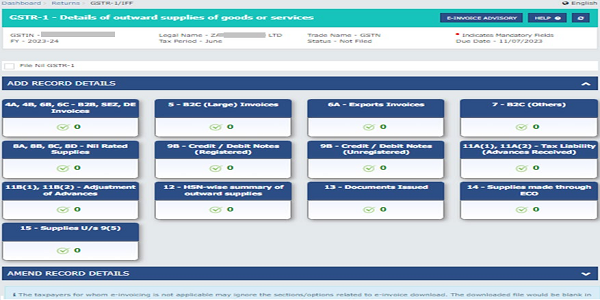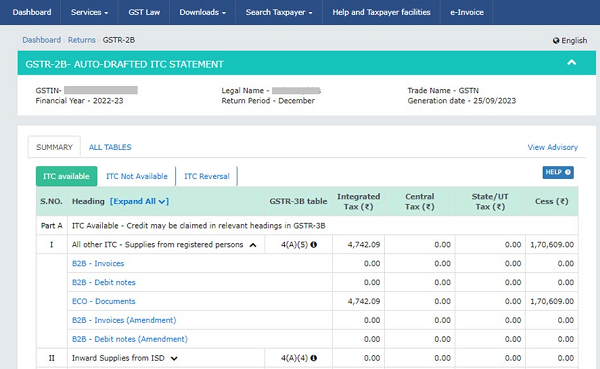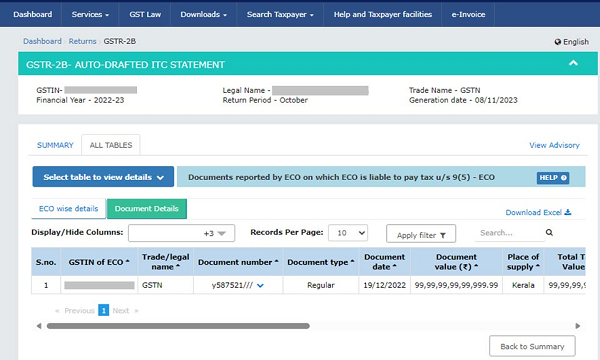Introduction: The GST framework is continuously evolving to enhance transparency and compliance across various sectors, including e-commerce. In line with this objective, Notification No. 26/2022 – Central Tax, dated December 26, 2022, introduced two new tables, Table 14 and Table 15, in FORM GSTR-1 and the Invoice Furnishing Facility (IFF). These additions are specifically designed for taxpayers who either make supplies through e-commerce operators (ECO) or are liable to pay tax under Section 9(5) of the GST Act. This advisory aims to elucidate the purpose, details, and reporting process of these new tables to ensure taxpayers are well-informed and compliant.
1. Purpose: The purpose of this advisory is to make taxpayers aware of the new Table 14 and 15 in FORM GSTR-1 and IFF. These tables are relevant for only those taxpayers who either supply through E-Commerce operator (ECO) or are themselves liable to pay tax under Section 9(5) of the GST Act.
2. Introduction: As per Notification No. 26/2022 – Central Tax dated 26th December 2022 two new tables Table 14 and Table 15 were added in GSTR-1 to capture the details of the supplies made through e-commerce operators (ECO) on which e-commerce operators are liable to collect tax under section 52 of the Act or liable to pay tax u/s 9(5). These tables have now been made live on the GST common portal. These two new tables will be available in GSTR-1/IFF from January-2024 tax periods onwards.
3. Table Wise Details
| Table Details | Description |
| 14. (a) Details of the supplies made through e-commerce operators on which e-commerce operators are liable to collect tax under section 52 of the Act [Supplier to report] |
|
| 14. (b) Details of the supplies made through e-commerce operators on which e-commerce operators are liable to pay tax u/s 9(5) [Supplier to report] |
|
| 15. Details of the supplies made through e-commerce operators on which e-commerce operator is liable to pay tax u/s 9(5) [e-commerce operator to report] |
|
4. Other Salient Features :-
1. Taxable value along with tax liabilities from all the above four sections i.e., B2B, B2C, URP2B and URP2C of table 15 will be auto-populated to table 3.1.1(i) of GSTR-3B.
2. There will be no auto-population of e-invoice in Table -15. E-invoices reported for 9(5) supplies will be populated in FORM GSTR-1 as per existing functionality. E-commerce operator are advised to examine and add such records in table 15 related to 9(5) supplies.
5. Step to report details in Table 14/15:
1. To view Table 14/15, taxpayer can navigate to Returns Dashboard > Selection of Period > Details of outward supplies of goods or services GSTR-1 > Prepare Online

2. Taxpayers can access the Table 14(a) & 14(b) by clicking the Liable to collect tax u/s 52 (TCS) and Liable to pay tax u/s 9(5) respectively available at the top of table 14 page.
3. Similarly, the different section of Table 15 can be accessed using the respective tab available at top of the table 15 page.
4. After adding the records taxpayers can file their GSTR-1 as per the existing process.
Introduction of new table ECO-Documents in GSTR-2B
1. The taxpayers are also being provided a facility to pass input tax credit (ITC) to the registered taxpayers who are receiving the supplies u/s 9(5) through ECO. Such ITC will be available to the registered recipient in newly introduce section in GSTR-2B. A new table “ECO – Documents” is being added under all other ITC section in GSTR-2B. In this table, the registered recipient can view the document details of the supplies received through e-commerce operator on which e-commerce operator is liable to pay tax under section 9(5) of the Act.
2. The values will be auto populated from Registered Supplier and Registered Recipient (B2B) and Unregistered Supplier and Registered Recipient (URP2B) section of table 15 to this new ECO – Documents table of GSTR-2B.
3. To view the ECO-Documents table, taxpayer can navigate to Returns Dashboard > Selection of Period > Auto- drafted ITC Statement for the month GSTR 2B > View

4. To view the records in ECO-Documents table, taxpayer can navigate to Returns Dashboard > Selection of Period > Auto- drafted ITC Statement for the month GSTR 2B > View > ECO Documents

Conclusion: The introduction of Tables 14 and 15 in FORM GSTR-1/IFF marks a significant step towards refining the GST reporting mechanism for transactions involving e-commerce operators. By capturing detailed information on supplies made through e-commerce platforms, these tables facilitate accurate tax collection and compliance, ensuring a level playing field for all stakeholders in the e-commerce ecosystem. Taxpayers dealing with e-commerce operators must familiarize themselves with these new reporting requirements to avoid any compliance issues. Moreover, the provision for passing input tax credit (ITC) through the ECO-Documents table in GSTR-2B underscores the commitment of the GST framework to streamline tax processes and empower businesses with better ITC management. As the GST landscape evolves, staying updated with such changes is crucial for maintaining compliance and optimizing tax liabilities.





